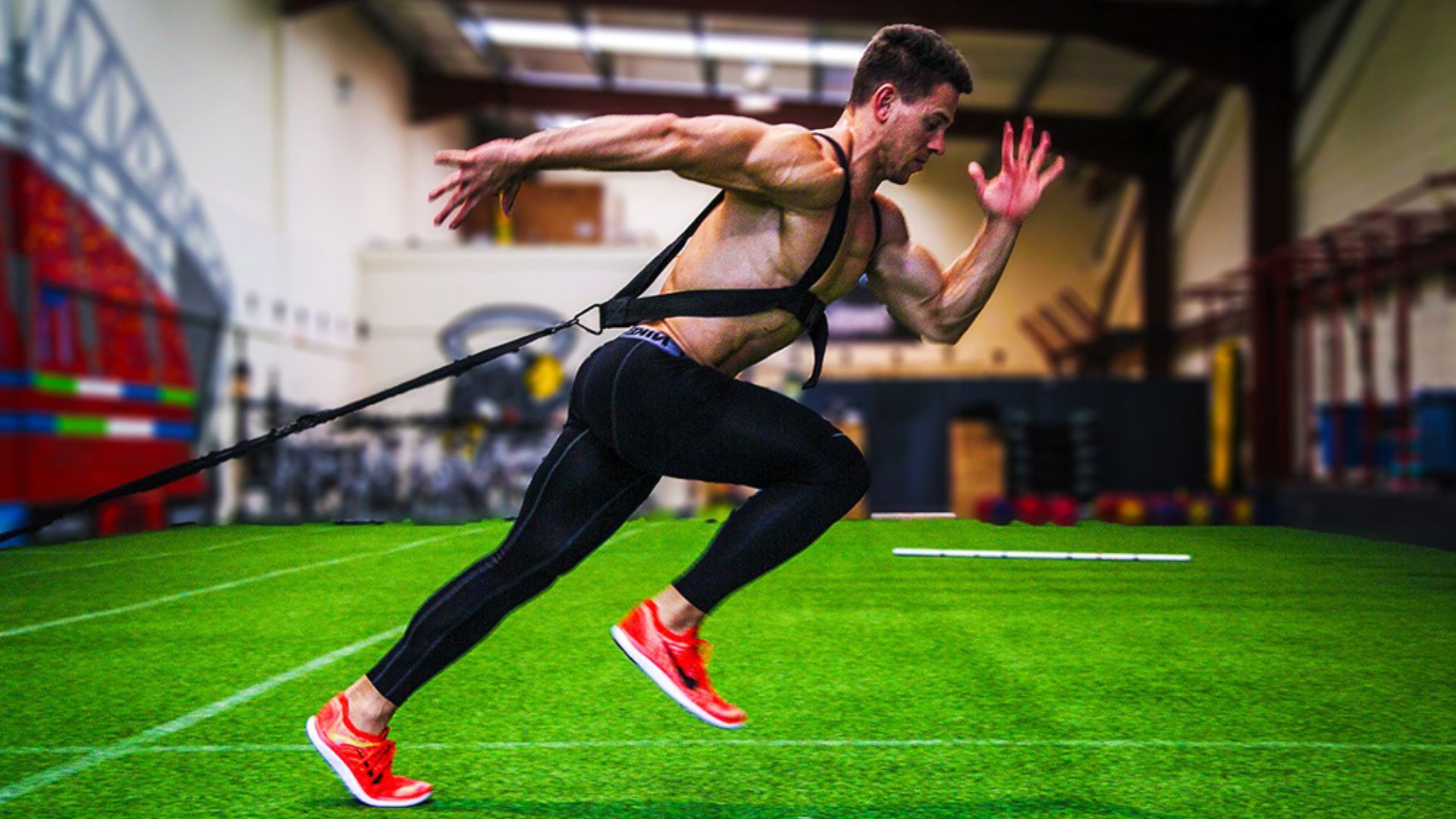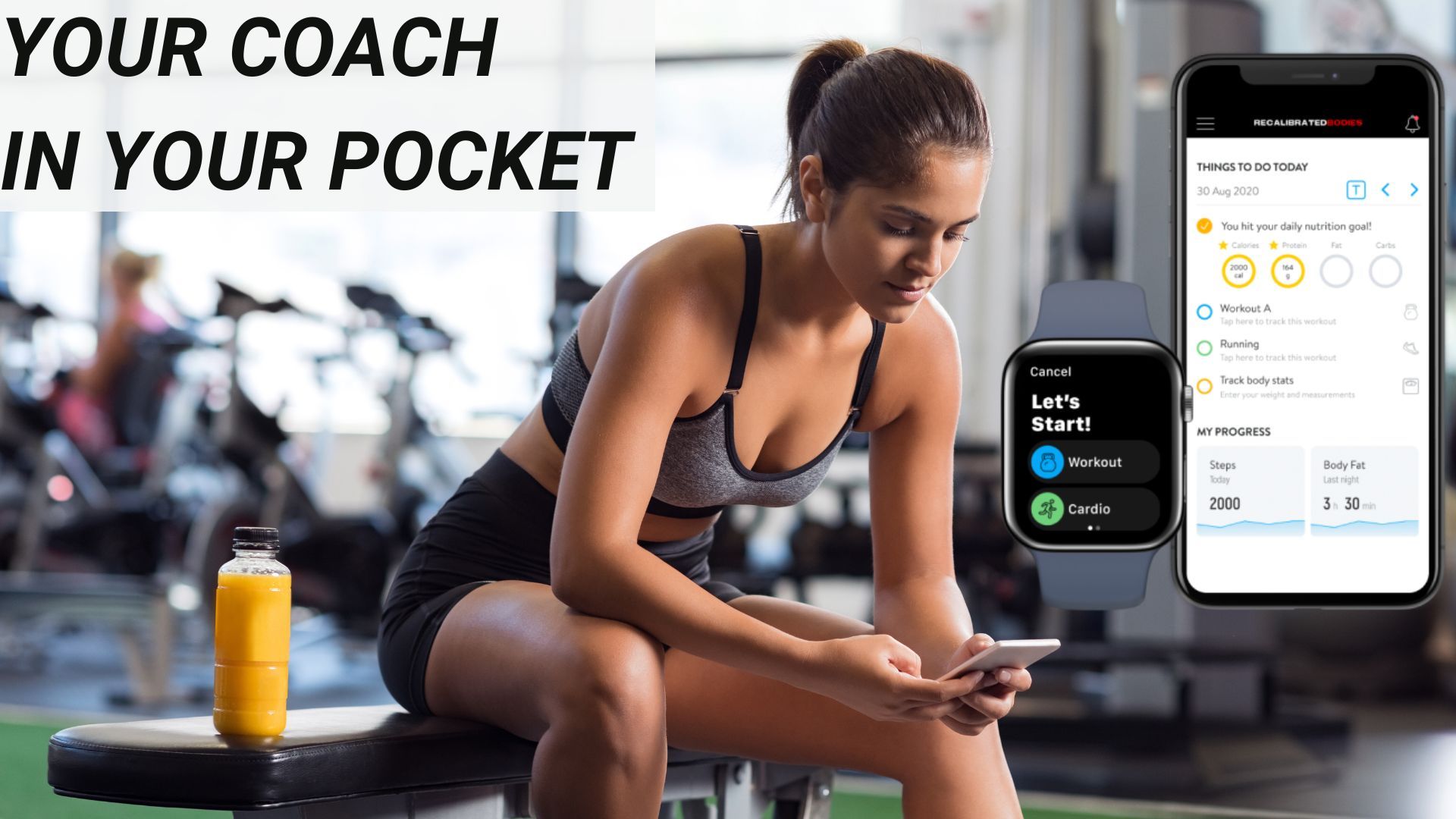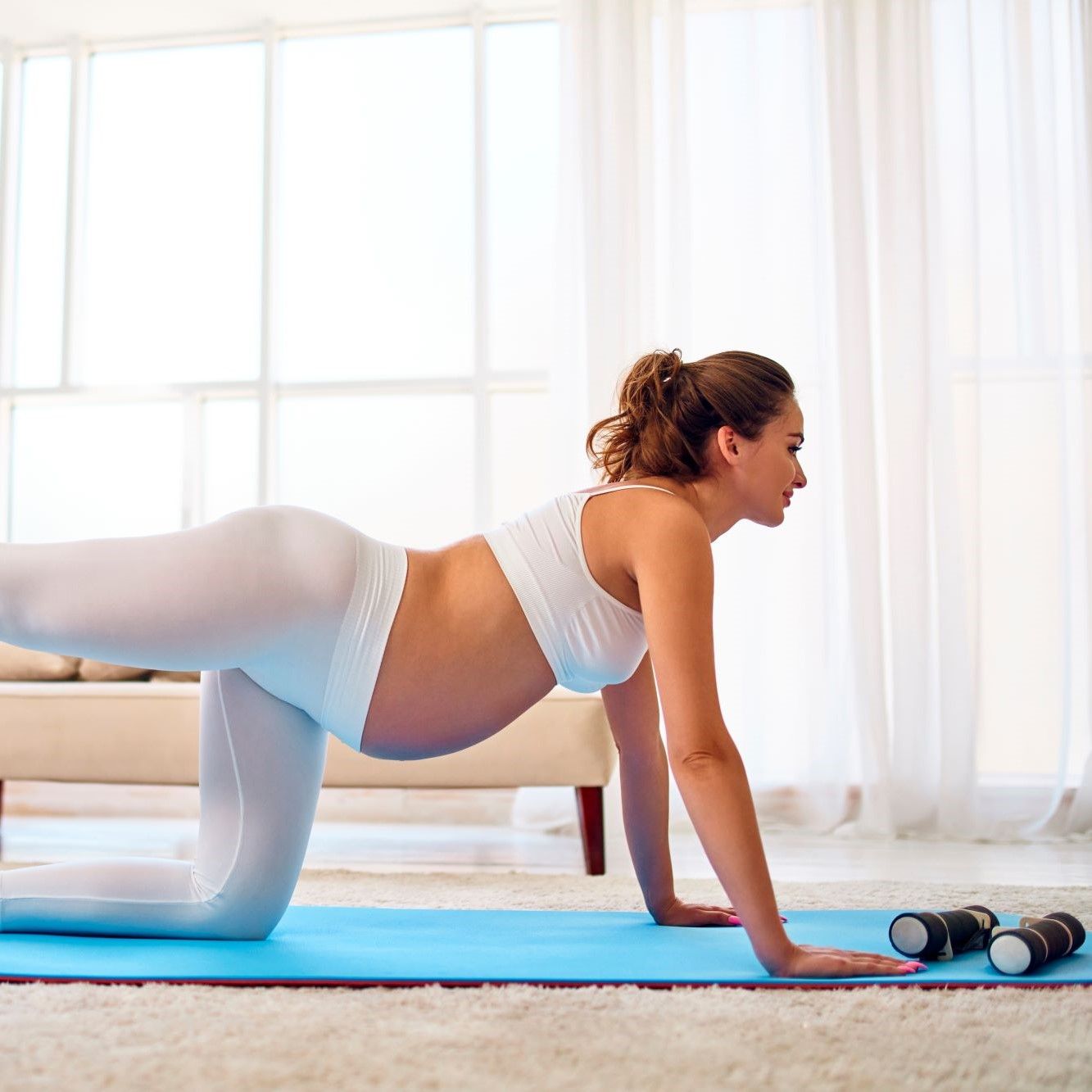You’re facing a dilemma… you either love doing cardio training or need to do it to remain fit and healthy, but you’ve heard that cardio training can impact your ability to build or preserve muscle. Is it possible to maintain or improve your cardiovascular fitness AND build or preserve a lot of muscle mass? Is it as bad as what some trainers make it out to be? Let’s take a look at what the science has to say about the effects of cardio training on strength, power, and muscle size, and what you can do to help protect your hard-earned muscle mass.
The Effect of Cardio Training on Strength, Power & Muscle Size
Cardio (endurance) training has been shown to have an 'interference' effect on strength, power, and muscle hypertrophy (growth) gains (1). When added to a strength training program (known as concurrent training), it has been shown to negatively impact the amount that can be gained (1, 2). This doesn't mean you can't make progress with some cardio training however - studies have shown you can still make good gains in strength, power, and muscle hypertrophy with the inclusion of cardio training in your strength training program (1, 2) - it just means you must be smart about how much and what type of cardio you decide to use. Different types and amounts of cardio have different effects on power, strength, and muscle hypertrophy gains.
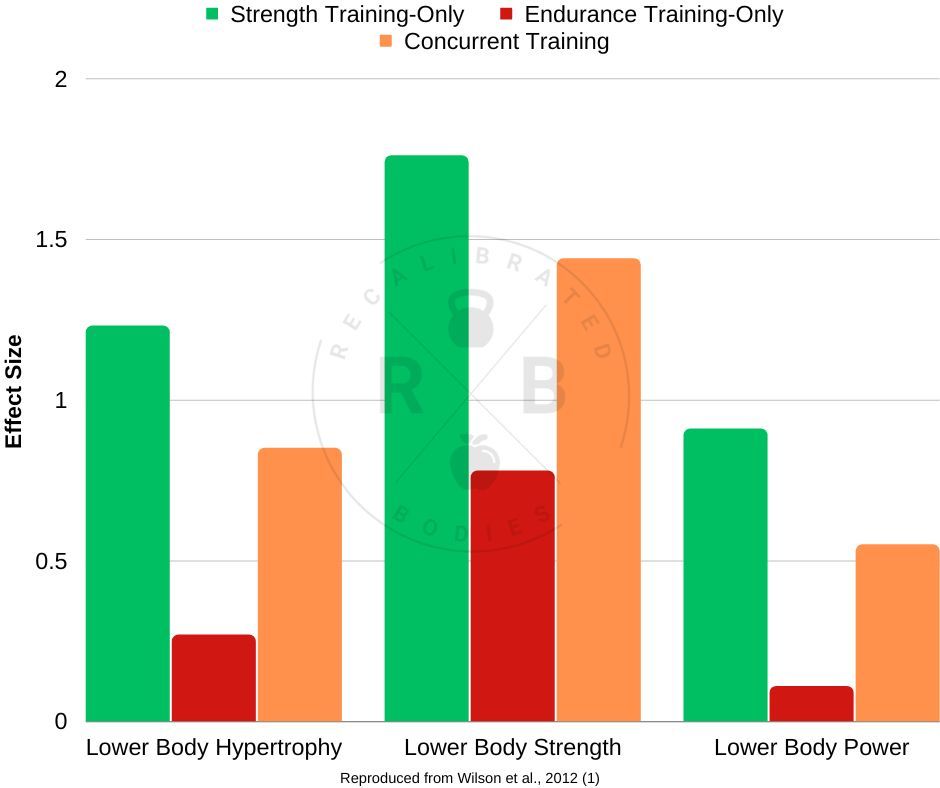
Long, Slow Distance Cardio Sucks
If you had to pick a form of exercise that would likely have the worst impact on your gains, it would be long, slow-distance endurance training (e.g., running 10 km). (1) Long, slow-distance endurance training has a different adaption effect compared to strength training. It doesn't result in a significant increase in strength and power, and it doesn't cause muscle to hypertrophy like strength training does (1). On its own, the gains you would get from pure cardio training are absolutely minimal, if any. Added to a strength training program, it can interfere with the gains you could make in strength, power, and muscle hypertrophy. Training programs that include both long, slow-distance endurance training and strength training have been shown to produce fewer gains than programs that only include strength training (1).
Slow, Long Distance Running Really Sucks
If you had to pick the worst type of cardio training to do, it would be long, slow running. Both running and cycling have been shown to significantly impair lower body strength, power and muscle hypertrophy gains, however, running impaired gains the most (1). When running, the leg muscles experience a high eccentric load when the lead foot strikes the ground. This high eccentric load repeated enough times (i.e., during a long run) can result in a high amount of muscle damage (3). This high amount of muscle damage is believed to have an interference effect with strength, power, and muscle hypertrophy gains of the lower body. If you absolutely have to do some long and slow cardio training, but don’t need to be good at running, then opting for other modalities, such as cycling and rowing, could help to mitigate its impact on strength, power, and muscle hypertrophy gains.
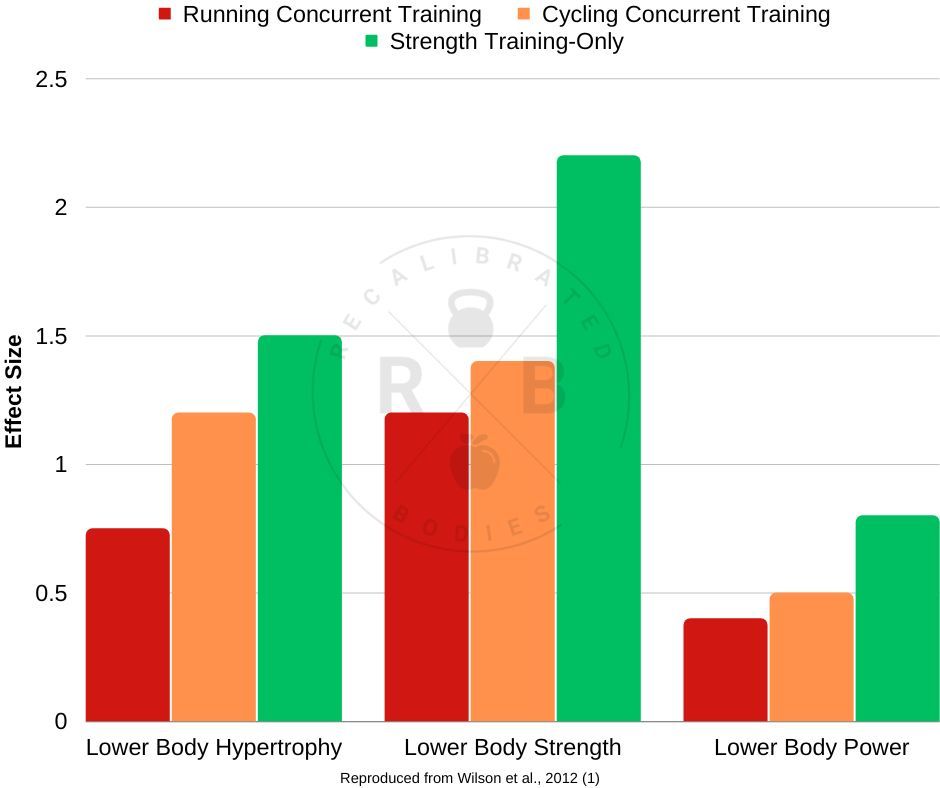
High-Intensity Cardio is Better
High-intensity training (HIT), such as interval training, is a much smarter option if you need to work on your cardiovascular fitness but want to preserve as much of your strength, power, and hypertrophy gains. Interval training has been shown to be as effective as slow, long-distance endurance training for improving cardiovascular fitness (4). Included in a strength training program, it has been shown to produce similar increases in muscle hypertrophy and upper body strength compared to strength training-only programs (2). However, lower body strength gains from strength training will still likely be less with the inclusion of interval training compared to a strength training-only program. Ironically, HIT using running has been shown to be better than cycling for mitigating the negative effect on gains, unlike with long, slow-distance training (2).
The More You Do, The Worse It Is
It's pretty clear by now that cardio training isn't great for improving strength and power or building muscle. However, this doesn't mean that any amount of cardio is going to have a devastating effect. The total amount (frequency and duration) of cardio you complete will have the greatest influence on how much it impacts your gains (1). If you can avoid cardio training entirely, then you'll get the best lower body strength, power, and muscle hypertrophy gains. If you want to maximise your strength, power or muscle size and need to improve or maintain your cardiovascular fitness for your health or sport, or just because you enjoy it, then do the least amount that you can get away with.
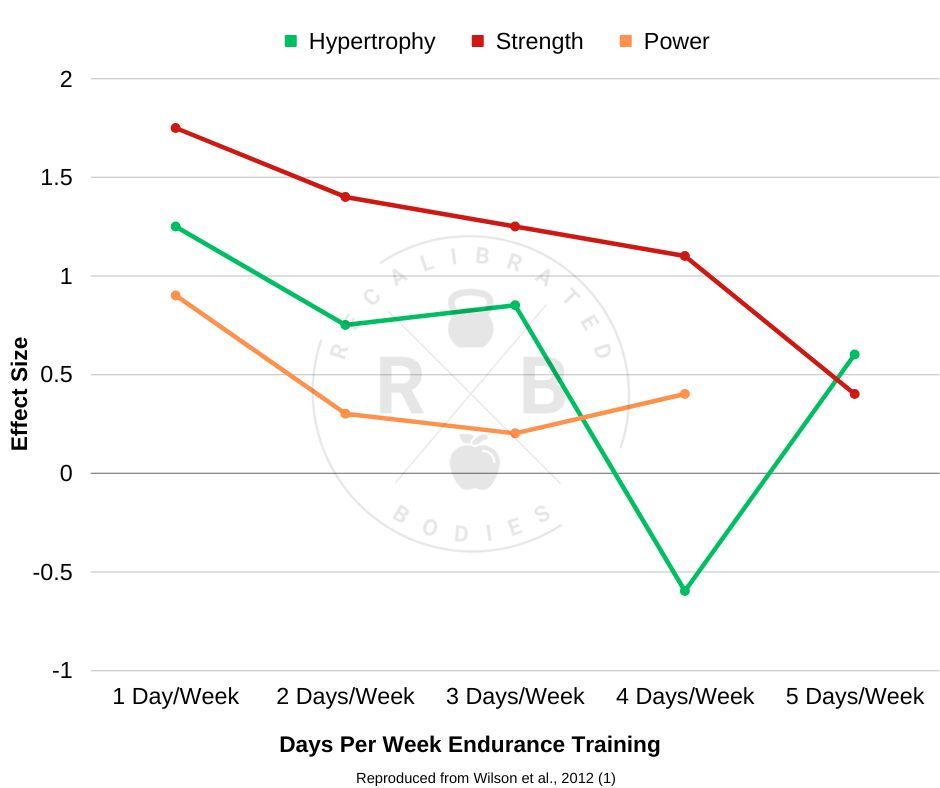
Your Upper Body is Fine, It's Just Your Legs!
If you haven't noticed already, all the negative effects of cardio training we've been talking about have been on the lower body - the upper body doesn't get affected at all by cardio that uses the lower body, such as running and cycling. The effects of cardio are specific to the body area that is involved in the exercise modality. Cycling and running have been shown to only affect strength, power, and muscle hypertrophy gains in the lower body; the upper body's gains are unaffected (1, 2). There hasn't been sufficient research to conclusively determine if cardio training modalities that include the upper body (e.g., swimming, rowing, ski-ergs, etc.) negatively impact upper body strength, power, and muscle hypertrophy (1), however, given that lower body endurance training modalities can, it's very possible that cardio training modalities using the upper body will negatively impact gains as well if you do enough of it.
Key Takeaways
- If your main goal is to develop as much strength, power, and muscle hypertrophy as possible, it's best to limit cardio training as much as possible.
- Long, slow-distance cardio training will have the worst impact on your gains - especially running. Cycling is a better option.
- Utilise HIT as much as possible and keep the total amount of cardio completed to the absolute least needed. If you do decide to use interval training to work on your cardiovascular fitness, then running is actually a better option than cycling.
- Try to incorporate cardio training that uses the upper body as much as possible to help mitigate the effect cardio has on the lower body.
Don't Let Cardio Get In The Way of Your Gains!
With a strategic training program, you can still include cardio in your training regime without it limiting your gains in your strength, power, and muscle mass. The key is to strategically time when you perform cardio, how much you do, and what type you do. Our coaches and programs help you maximise your strength, power, muscle gains while preserving and even improving your health and cardiovascular fitness. Find the best program for you in the menu of our website to help you crush your goals!
References
- Wilson, J. M., Marin, P. J., Rhea, M. R., Wilson, S. M.C., Loenneke, Jeremy P., & Anderson, Judy C. (2012), Concurrent training: A meta-analysis examining interference of aerobic and resistance exercises, J Strength Cond Res., 26(8), 2293-2307
- Sabag, A., Najafi, A., Michael, S., Esgin, T., Halaki, M., Hackett, D. (2018), The compatibility of concurrent high intensity interval training and resistance training for muscular strength and hypertrophy: a systematic review and meta-analysis, J Sports Sci., 36(21), 2472-2483
- Koller, A., Mair, J., Schobersberger, W., Wohlfarter, T., Haid, C., Mayr, M., Villiger, B., Frey, W., Puschendorf, B. (1998), Effects of prolonged endurance exercise on plasma myosin heavy chain fragments and other muscular proteins. Cycling vs running., J Sports Med Phys Fitness, 38(1), 10-17
- Milanović, Z., Sporiš, G. & Weston, M., 2015. Effectiveness of High-Intensity Interval Training (HIT) and Continuous Endurance Training for VO2max Improvements: A Systematic Review and Meta-Analysis of Controlled Trials. Sports Medicine, 45(10), pp. 1469-81

